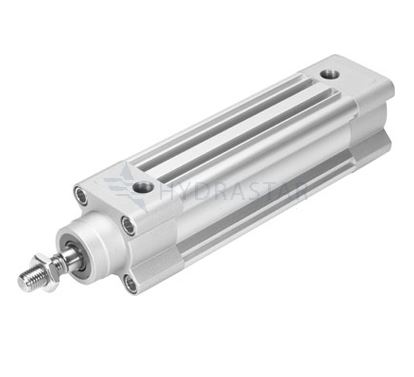Pneumatic cylinders are a complex piece of equipment with a fairly long lifespan. Unfortunately, numerous problems can arise due to improper maintenance, poor installation, and untimely repair.
The majority of issues can be prevented simply by “reading the manual”. However, even if maintenance is sufficient, sometimes faults occur that require repair. We would like to share a few ways to prevent pneumatic cylinder problems and avoid costly repairs.
1) Side Loading
One of the most common causes of pneumatic cylinder breakdowns is side loading, which is when pressure is applied laterally to the cylinder axis. This leads to uneven piston and rod wear or breakage, seal failures, tube scoring, and many other mechanical problems.
The key to preventing side loading is to ensure correct installation. It’s important to check the alignment of the cylinder piston rod with its mating machine component. All cylinder mountings should be checked regularly.
2) Contamination
Contamination occurs either internally from the air supply or externally from the environment. Types of contamination include water, oil, and solids. Contaminants can damage seals, plug orifices, and corrupt surface finishes.
Preventing contamination:
• Solids – You can prevent solids contamination by keeping the manufacturer’s port plugs in working condition until fitting the system with piping. You should also remove all contaminants before connecting to cylinder ports. A metallic wiper can remove large contaminants from the rod.
• Water – To prevent damage from water, install stainless-exercised steel rods and fasteners and/or apply special coatings to the surface of the pneumatic cylinder.
• Oil – To avoid oil damage, choose seals compatible with the oils used in the system. Check with your parts supplier to confirm compatibility.
3) Poor Lubrication
Pneumatic cylinder failure often happens due to insufficient cylinder seal lubrication. With poor lubrication, seals eventually dry out, leading to leakage and overheating.
Seals should be re-lubricated and replaced regularly. You could also try “no-lubricant” cylinders or use an injection lube system.
4) Leakage
When properly installed and maintained, pneumatic cylinders shouldn’t suffer from leaks. However, following incorrect installation, seal failure, or mechanical damage a leak may occur. High temperatures and humidity can also affect the wear of a dynamic seal valve, thus leading to leakage.
It’s possible to prevent a leak problem by regular maintenance and timely replacement of barrel, rod, and piston seals. Check the environmental tolerances of a component before using it in your application.
5) Operation Beyond Performance Range
Operating pneumatic cylinders beyond their performance limits is bound to lead to damage and premature failure. To prevent such problems it’s important to follow the manufacturer’s operational guidelines.
If your equipment is showing signs of strain or you know it’s been overworked, it’s important to check the rods and carry out a visual health check. For future operation, the rod-thread size may need to be increased.
Quality Pneumatic Parts From Hydrastar
At Hydrastar we stock a wide selection of Festo pneumatic cylinders for numerous uses. With proper installation and maintenance, our Festo cylinders will last for many years. For more information, please download our free e-book, How To Minimise Downtime With Pneumatic Plant & Machinery.



